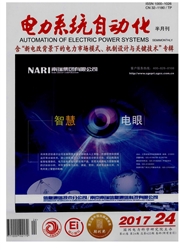

 中文摘要:
中文摘要:
从传感器中采集到的信号即使经过了模拟滤波,但是其通过数据采集系统后仍然会含有随机噪声。然而,这些随机噪声会限制传感器的分辨率和影响系统的动态范围。针对这一问题,利用HHT算法的经验模态分解对从基于压电陶瓷驱动的微纳米传感器中采集到的数字信号进行数字滤波,进而对采集到的微弱信号进行进一步处理,以提高微纳米传感器在稳态输出时信号的信噪比从而提高传感器的性能。主要采用两种方法:一种方法是滤掉经过模态分解后信号中的最高频噪声,另一种方法是滤掉经过模态分解后信号中的前两阶噪声。最后对比实验结果证实了此算法的有效性,其能够有效的改善传感器的线性度。
 英文摘要:
英文摘要:
A relatively new algorithm called Hilbert-Huang transform( HHT) is proposed. It utilizes empirical mode decomposition(EMD)to filter noise in a nanoscale displacement sensor,which is actuated by PZT. However,even after the pre-filtering,the random noise still cannot be fully eliminated. The noise limits the resolution of the sensor and affects the dynamic range of the whole system. So the signal need to be further processed to increase the Signal to Noise Ratio( SNR) and then improve the performance of the sensor. Two kinds of methods are attempted. One is filtering the highest frequency noise of intrinsic mode functions( IMFs) after EMD. And the other one is to just filter the first and second IMFs. Finally,experiments are conducted to verify the effectiveness of the HHT algorithm and the improvement of sensor's linearity.
 同期刊论文项目
同期刊论文项目
 同项目期刊论文
同项目期刊论文
 Limitations of au particle nanoassembly using dielectrophoretic force - A parametric experimental an
Limitations of au particle nanoassembly using dielectrophoretic force - A parametric experimental an A Method Study on Assembly of Single-Wall Carbon Nanotube Field Effect Transistor Using Dielectropho
A Method Study on Assembly of Single-Wall Carbon Nanotube Field Effect Transistor Using Dielectropho Phase Dependent and Independent Frequency Identification of Weak Signals Based on Duffing Oscillator
Phase Dependent and Independent Frequency Identification of Weak Signals Based on Duffing Oscillator 期刊信息
期刊信息
